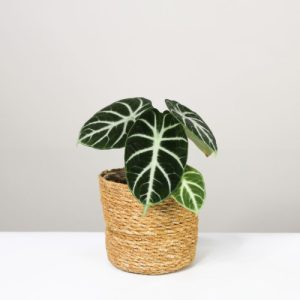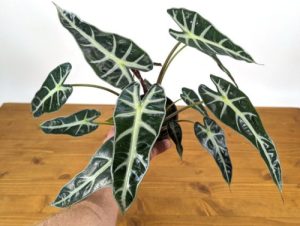- English
- Chinese
- French
- German
- Portuguese
- Spanish
- Russian
- Japanese
- Korean
- Arabic
- Irish
- Greek
- Turkish
- Italian
- Danish
- Romanian
- Indonesian
- Czech
- Afrikaans
- Swedish
- Polish
- Basque
- Catalan
- Esperanto
- Hindi
- Lao
- Albanian
- Amharic
- Armenian
- Azerbaijani
- Belarusian
- Bengali
- Bosnian
- Bulgarian
- Cebuano
- Chichewa
- Corsican
- Croatian
- Dutch
- Estonian
- Filipino
- Finnish
- Frisian
- Galician
- Georgian
- Gujarati
- Haitian
- Hausa
- Hawaiian
- Hebrew
- Hmong
- Hungarian
- Icelandic
- Igbo
- Javanese
- Kannada
- Kazakh
- Khmer
- Kurdish
- Kyrgyz
- Latin
- Latvian
- Lithuanian
- Luxembou..
- Macedonian
- Malagasy
- Malay
- Malayalam
- Maltese
- Marathi
- Mongolian
- Burmese
- Nepali
- Norwegian
- Pashto
- Persian
- Punjabi
- Serbian
- Sesotho
- Sinhala
- Slovak
- Slovenian
- Somali
- Samoan
- Scots Gaelic
- Shona
- Sindhi
- Sundanese
- Swahili
- Tajik
- Tamil
- Telugu
- Thai
- Ukrainian
- Urdu
- Uzbek
- Vietnamese
- Welsh
- Xhosa
- Yiddish
- Yoruba
- Zulu
- Kinyarwanda
- Tatar
- Oriya
- Turkmen
- Uyghur

Ko nga tipu Alocasia are well-known in the horticulture scene for their unusual shapes and amazing foliage. Not just for their great size, but also for their diversity of forms and textures, these plants’ leaves are among their most arresting characteristics. From heart-shaped to arrow-shaped, from smooth surfaces to patterns with noticeable veins, each leaf of Alocasia plants grabs people’s attention with its variety and visual impact. She is a masterwork of nature.

Alocasia Dragon Scale
Ko te nuinga o te rahi me te matotoru, he tapawha maeneene nga rau, me te whiti motuhake mai i to ratau papa e hipoki ana i te paoa o te waikore. Me te taapiri i te uara whakapaipai, te whakangungu rakau o tenei rau mai i nga waahanga taiao me te ra kaha. Ahakoa ko nga tipu allocasia kei te nuinga o nga rau matomato, ka kitea e to ratou hue he kara-matomato ki te kowhai-matomato i raro i nga momo rama rama me te tipu o te kiko.
I tua atu i to raatau oranga, ko nga rau o nga tipu allocasia he taonga i roto i nga ngakau o te hunga e pai ana ki te maara. Ko te whanaketanga me te whakaaturanga kaore noa e whakaatu i te ahuatanga o te tipu engari ka whakakotahi ano hoki i nga mahi maara me te ataahua taiao. Ko te rangahau hohonu o nga momo rau Alocasia ka whakaatu i nga mea ngaro mo enei mea whakamiharo.
Alocasia rau kakano me nga waahanga
Not only do alocasia leaves’ unusual textures and intricate veining appeal, but their physiological purposes depend on these qualities as well. Water and nutrients are carried via the veins of a leaf, often known as vascular bundles; their distribution patterns range from parallel veins to reticulated veins, each pattern suited to the growth requirements and environmental circumstances of the plant.
In Alocasia, the veins can show a clear network of main and subsidiary veins that weaves a complicated pattern. This arrangement not only increases the leaf’s support but also guarantees that all of its components get enough water and nutrients, therefore improving the transport efficiency.
The leaves have similarly remarkable texture. Although Alocasia leaves typically have a smooth surface, in certain kinds little structures on the surface of the leaves or protrusions of the veins may cause minor bumps and grooves to be seen. These textures not only improve the leaves’ appearance but could also aid to lower water evaporation by adding another layer of protection for them.
Te tono whakapaipai whakapaipai mo te maara me nga waahi koiora e taea ai e te alocasia te tipu i roto i te whānuitanga o nga ahuatanga taiao e tautuhi ana i nga uaua me nga kakano o enei tipu me nga kakano o enei tipu.
Te Huringa Whanaketanga Tuarua Alocasia
Alocasia’s leaf development cycle is a normal one, from budding to maturity then to senescence and last shedding. This cycle not only reveals the consistency of plant development but also a means of adaptation for plants against environmental changes.
Ko nga rau hou ka tipu mai i nga puku rau i te atamira hua. I te nuinga o te wa ka hiahia te rau hou, ko nga rau hou i hangaia ki te pāmahana me te haumākū hei akiaki i a ratau. I tenei wa, ka tere te tipu o nga rau, ka tino aro ki nga taiao.
The leaves progressively unfurl and achieve their full shape over time. Complete structure and purpose abound from mature leaves, which also enable efficient photosynthesis and transpiration. Right now, the leaves’ texture and color are also most different.
Whai muri i te waahanga pakari, ka haere nga rau ki te tihi o te tipu ka tae ana te rahi me te ahua o te pai o te whakaahua me te whakaahua whakaahua. Mo nga tipu alocasia i tenei waahanga, ka nui te kaha o o raatau rau me nga matūkai.
Ka pai te pakeke o nga rau hei huringa o nga tau, o nga ahuatanga taiao ranei. Ko te ahua o te SENESCent he iti ake, he maama ake te tae, me nga uaua kitea. I roto i te huringa koiora, he mahinga noa tenei me te whakatupato kei te rite te tipu mo te huringa hou o te whanaketanga.
I te mutunga ake, ka taka nga rau tawhito ki te tipu hei whakarato i te waahi me nga rauemi mo te whakawhanaketanga o nga mea hou. Na te heke o te rau, ka awhina te tipu ki te whakaheke i te kaha o te kaha me te akiaki i te whanaketanga hou.
Apart from reflecting the physiological condition of the plant, Alocasia’s leaf development cycle is a crucial guide for garden management. Knowing this cycle will enable those who like gardening to maintain the plants better and guarantee their healthy developm
Ko nga hononga ahurea me nga kupu whakarite mo te rau reeti
Ma ona rau maere me te ahua rereke, he tohu nui te tipu o Calla reeti me te maha o nga iwi rereke katoa.
Na te nui o te rahi me te kaha, ka whakaarohia nga rau o te whakato reeti Calla i roto i te maha o nga whakatipuranga hei tohu mo te taonga me te angitu. He maha nga wa ka whakamahia ki te whakapaipai i nga waahi karakia me nga waahi karakia, ka tu ratou mo te nui me te waimarie. Ko nga rau o Calla Lily e whakamahia ana hei whakapaipai i etahi waahi i nga marena tuku iho hei tohu i te angitu me te ahuareka o te oranga marena.
Furthermore relevant to spiritual and religious views are the calla lily plant’s leaves. Some civilizations see them as holy and link them to spiritual cleansing and relationships to the gods. Because of their great vigor and fast development, the leaves of the calla lily are seen as an emblem of rebirth and eternity.
Ko te hoahoa kaainga hou i etahi wa ka whakaatu i te mura ahi me te ataahua taiao ma te whakamahi i nga rau o te tipu o Calla Reily. Ko te aroaro o te aroaro o te taiao e whakarato ana i te taiao me te tohu i te haangai harmonic me nga taiao.
He mea pai ki te mohio ko te tipu o te reri o Calla ka hono atu ki etahi ahurea me etahi tikanga kino. Hei tauira, ka whakamahia i etahi wa he uaua ki te uaua me te wero i te wa e wero ana kia mau tonu nga ahuatanga motuhake.
Mai i te taonga me te ngakau ki te tohu wairua me te whakapono ki te ataahua o te ao, ko nga rau o te tipu alOcasia kei te maha o nga hononga korero. Kei roto i a raatau te waahanga o te noho tangata me te ao. Ko te mohio ki enei tohu tohu ka awhina i a maatau ki te kore e kitea noa te tipu allocasia engari he maha nga tikanga ahurea.

Alucasia
Nga kounga motuhake o te Alucasia genus leaves are well-known; typically, they possess these: The leaves are mostly dark green, with a smooth, shiny surface, occasionally accompanied by white or yellow marks; the veins are obvious, usually distributed in a network, which enhances the structure and transport efficiency of the leaves; the leaves are thick in texture, with smooth or wavy edges. These traits not only show the Alocasia genus plants’ environmental adaptation but also provide very great esthetic value.
Previous News
Te tipu o te tipu o te Hainamana HainamanaNext News
COBRA SIRDROOT Taiao Whakatakotoranga


